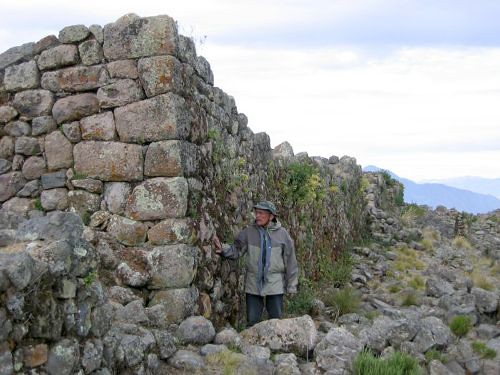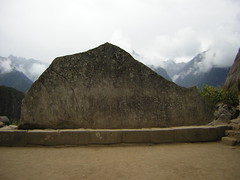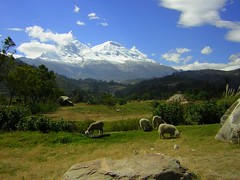Caral – The “Oldest” Civilisation in the Americas
In ancient times, as the peoples of the Nile valley in Egypt and the peoples of the Indus valley in India came together to form cooperative societies, so too did the people of the Supe valley in Peru. In groups of family units of small scale farmers and fishers they began to form systems of government, religion and trade.
| Timescale of events of the birth of a civilisation |
| 3000BC and before Family groups take collective possession of the land in the valley. Establish farming practices and build communal buildings.3000-2600BC Capital city-like urban settlement springs up for use of all large groups collectively. I.e. groups of groups. Public buildings and markets built. 2600-2300BC 2300-2200BC 2200-2100BC 2100-1800BC 1800BC onwards |
The civilisation that left us Caral also left 19 other urban settlements in the Supe valley 184km north of the modern day city of Lima. Although all different in their layout and design, they all bare the hallmarks of being created by a great civilisation – they all present public buildings, public monuments, circular plazas, temples and large villas. Building materials varied between wood and stone. The cities were spread along the coast, the oldest of which located on the coast itself, Áspero, which was primary for managing fish supply to the others. The largest of which was much further along the valley, Caral, being more of a ceremonial centre.
The location of the city of Caral was specifically chosen. Although it is in the valley, if you stand in the centre of the city at no time can you see the green of the valley itself. Instead you are surrounded by large sandy hills and feel as if in a bowl like shape (a sensation sought-after by Andean cultures in the thousands of years following). Added to that, 6 huge pyramids mimic this phenomenon, surrounding the central plaza encompassing it in an irregular-shaped bowl.
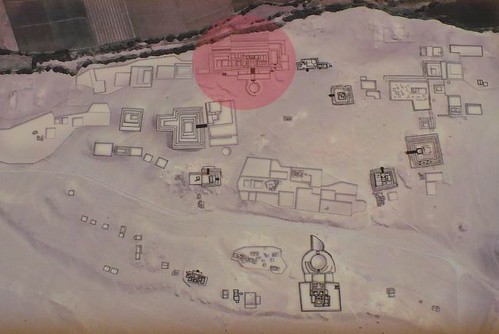
The site covers 66 hectares an is organised around a central plaza. It has 32 public buildings and many residential buildings. The homes of the elite were close to the pyramids, some even joined onto the backs. Those citizens dedicated to agricultural work lived on the edge of the city closer to the fertile parts of the valley.
The cities in the valley were self sufficient in that each produced enough food to feed their populations and each traded enough to be wealthy. However, each area and each city was governed by a central authority probably based in Caral. The central government organised the water distribution, regulated social, economic and religious activities and guaranteed peace and order.
For the first time in human history there were those among us who could dedicate themselves to science, art and religion. In Caral arithmetic and geometry were developed and used in the design and construction of monumental buildings. Astronomy was studied and used to create calendars to manage social and agricultural events. A method of encoding and recording information was developed in the form of the quipu, used until the arrival of the Spanish. Vegetables were experimented with to created better quality crops and greater yields. Medicines were discovered and used to treat illnesses and religious beliefs and ceremonies were formed, one involving a ceremonial fire, with a complex ventilation system, in which offerings were burned in.
The Caral civilisation survived for over a thousand years before fading out. No-one really knows what happened to them, if their civilisation came to a natural end as others developed and took control of trade or if they were affected by extreme weather as have other civilisations over the ages have been. Some say the Chavin civilisation that later ruled a large part of the Andes are direct descendants as they have a similar building style and a sunken plaza. Whatever became of them, they were the ones who sparked civilisation in South America, more than 4000 years before the Incas.
Related blogs:
– Interview with Ruth Shady
– Introduction to Caral
This blog also features part of my series Explorando Lima, which aims to show just how special Peru is, so much so that you don’t even need to leave Lima to see the most amazing things.
Photos –
Tags: caral, explorando lima, lima, pyramids, ruins, ruth shady, supe




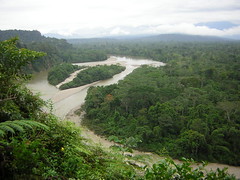
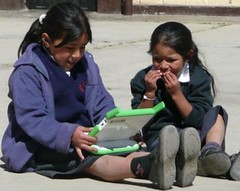
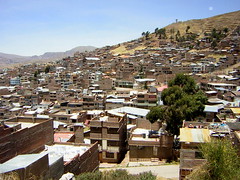
![A River Cries Out: The Rimac River Project [Featured]](http://farm4.static.flickr.com/3210/2681816738_3bc31ea46f_m.jpg)
